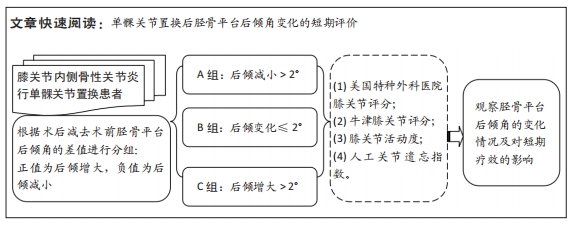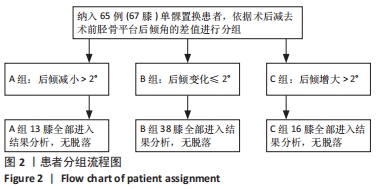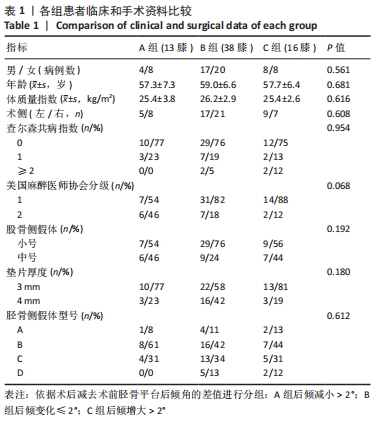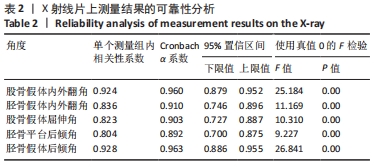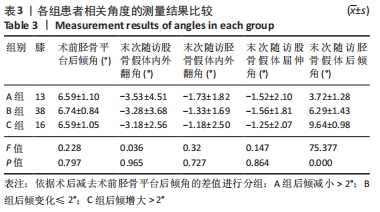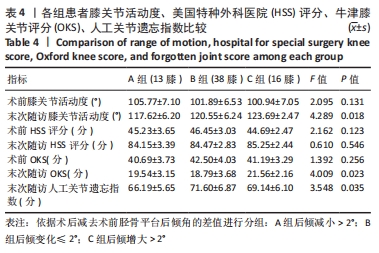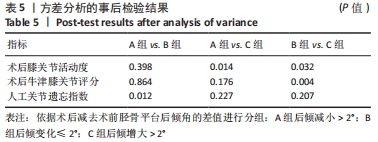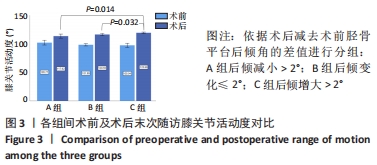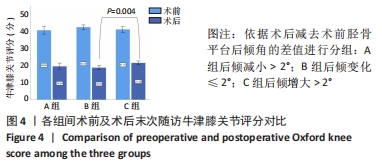[1] REN Y, HU J, TAN J, et al. Incidence and risk factors of symptomatic knee osteoarthritis among the Chinese population: analysis from a nationwide longitudinal study. BMC Public Health. 2020;20(1):1491.
[2] HU D, HUANG Z, ZHANG W, et al. Analysis of medial unicompartmental knee arthroplasty for patients with spontaneous osteonecrosis of the knee. Zhongguo Xiu Fu Chong Jian Wai Ke Za Zhi. 2019;33(1):13-17.
[3] JENSEN CB, PETERSEN PB, JØRGENSEN CC, et al. Length of Stay and 90-Day Readmission/Complication Rates in Unicompartmental Versus Total Knee Arthroplasty: A Propensity-Score-Matched Study of 10,494 Procedures Performed in a Fast-Track Setup. J Bone Joint Surg Am. 2021;103(12):1063-1071.
[4] KOZINN SC, SCOTT R. Unicondylar knee arthroplasty. J Bone Joint Surg Am. 1989;71(1):145-150.
[5] MC KEEVER DC. The choice of prosthetic materials and evaluation of results. Clin Orthop. 1955;6:17-21.
[6] HALAWI MJ, BARSOUM WK. Unicondylar knee arthroplasty: Key concepts. J Clin Orthop Trauma. 2017;8(1):11-13.
[7] GOODFELLOW J, O’CONNOR J. The mechanics of the knee and prosthesis design. J Bone Joint Surg Br. 1978;60-b(3):358-369.
[8] FRANZ A, BOESE CK, MATTHIES A, et al. Mid-Term Clinical Outcome and Reconstruction of Posterior Tibial Slope after UKA. J Knee Surg. 2019;32(5):468-474.
[9] BRUNI D, GAGLIARDI M, AKKAWI I, et al. Good survivorship of all-polyethylene tibial component UKA at long-term follow-up. Knee Surg Sports Traumatol Arthrosc. 2016;24(1):182-187.
[10] PLANCHER KD, SHANMUGAM JP, BRITE JE, et al. Relevance of the Tibial Slope on Functional Outcomes in ACL-Deficient and ACL Intact Fixed-Bearing Me dial Unicompartmental Knee Arthroplasty. J Arthroplasty. 2021;36(9):3123-3130.
[11] VAN DER LIST JP, KLEEBLAD LJ, ZUIDERBAAN HA, et al. Mid-Term Outcomes of Metal-Backed Unicompartmental Knee Arthroplasty Show Superiority to All-Polyethylene Unicompartmental and Total Knee Arthroplasty. HSS J. 2017;13(3):232-240.
[12] WIIK AV, NATHWANI D, AKHTAR A, et al. The unicompartmental knee is the preferred side in individuals with both a unicompartmental and total knee arthroplasty. Knee Surg Sports Traumatol Arthrosc. 2020; 28(10):3193-3199.
[13] WEINBERG DS, GEBHART JJ, WERA GD. An Anatomic Investigation Into the Relationship Between Posterior Condylar Offset and Posterior Tibial Slope of One Thousand One Hundred Thirty-Eight Cadaveric Knees. J Arthroplasty. 2017;32(5):1659-1664.e1651.
[14] 郭万首. 单髁关节置换手术技术[J]. 中华关节外科杂志(电子版), 2015,9(3):380-382.
[15] HERNIGOU P, DESCHAMPS G. Posterior slope of the tibial implant and the outcome of unicompartmental knee arthroplasty. J Bone Joint Surg Am. 2004;86(3):506-511.
[16] 马路遥, 郭万首, 张启栋. 胫骨假体后倾对Oxford单髁关节置换术后短期临床结果的影响[J]. 中华外科杂志,2017,55(6):430-434.
[17] 马广文, 黄斐, 吴云峰, 等. 胫骨后倾截骨对活动平台单髁关节置换术疗效的影响[J]. 中华骨与关节外科杂志,2017,10(4):302-304, 320.
[18] KANG KT, PARK JH, KOH YG, et al. Biomechanical effects of posterior tibial slope on unicompartmental knee arthroplasty using finite el ement analysis. Biomed Mater Eng. 2019;30(2):133-144.
[19] KOH YG, PARK KM, KANG K, et al. Finite element analysis of the influence of the posterior tibial slope on mobile-bearing unicompartmental knee arthroplasty. Knee. 2021;29:116-125.
[20] LI Z, CHEN Z, WEI J, et al. Excellent outcomes with Oxford Uni-compartmental knee arthroplasty in anteromedial osteoarthritis patients (≤60 years) at mid-term follow-up. BMC Musculoskelet Disord. 2021;22(1):859.
[21] GOODFELLOW JW, O’CONNOR J. Clinical results of the Oxford knee. Surface arthroplasty of the tibiofemoral joint with a meniscal bearing prosthesis. Clin Orthop Relat Res. 1986;(205):21-42.
[22] BISWAS D, VAN THIEL GS, WETTERS NG, et al. Medial unicompartmental knee arthroplasty in patients less than 55 years old: minimum of two years of follow-up. J Arthroplasty. 2014;29(1):101-105.
[23] SUTER L, ROTH A, ANGST M, et al. Is ACL deficiency always a contraindication for medial UKA? Kinematic and kinetic analysis of implant ed and contralateral knees. Gait Posture. 2019;68:244-251.
[24] SONG EK, PARK JK, PARK CH, et al. No difference in anterior knee pain after medial unicompartmental knee arthroplasty in patients with or without patellofemoral osteoarthritis. Knee Surg Sports Traumatol Arthrosc. 2016;24(1):208-213.
[25] HURST JM, BEREND KR. Mobile-bearing unicondylar knee arthroplasty: the Oxford experience. Orthop Clin North Am. 2015;46(1):113-124.
[26] NUNLEY RM, NAM D, JOHNSON SR, et al. Extreme variability in posterior slope of the proximal tibia: measurements on 2395 CT scans of patients undergoing UKA? J Arthroplasty. 2014;29(8):1677-1680.
[27] FUJITO T, TOMITA T, YAMAZAKI T, et al. Influence of Posterior Tibial Slope on Kinematics After Cruciate-Retaining Total Knee Arthroplasty. J Arthroplasty. 2018;33(12):3778-3782.e3771.
[28] KANG KT, KWON SK, SON J, et al. The increase in posterior tibial slope provides a positive biomechanical effect in posterior-stabilized total knee arthroplasty. Knee Surg Sports Traumatol Arthrosc. 2018;26(10): 3188-3195.
[29] SUZUKI T, RYU K, KOJIMA K, et al. The Effect of Posterior Tibial Slope on Joint Gap and Range of Knee Motion in Mobile-Bearing Unicompa rtmental Knee Arthroplasty. J Arthroplasty. 2019;34(12):2909-2913.
[30] ALI AM, NEWMAN SDS, HOOPER PA, et al. The effect of implant position on bone strain following lateral unicompartmental knee arthroplasty: A Biomechanical Model Using Digital Image Correlation. Bone Joint Res. 2017;6(8):522-529.
[31] TAKAYAMA K, MATSUMOTO T, MURATSU H, et al. The influence of posterior tibial slope changes on joint gap and range of motion in unicompartmental knee arthroplasty. Knee. 2016;23(3):517-522.
[32] INUI H, TAKETOMI S, YAMAGAMI R, et al. Necessary Factors to Achieve Deep Flexion for Asian Populations after Oxford Unicompartmental Knee Ar throplasty. J Knee Surg. 2020;33(3):294-300.
[33] ZUIDERBAAN HA, VAN DER LIST JP, KHAMAISY S, et al. Unicompartmental knee arthroplasty versus total knee arthroplasty: Which type of artificial joint do patients forget? Knee Surg Sports Traumatol Arthrosc. 2017;25(3):681-686.
[34] DAI YK, LIN W, YANG GM, et al. Joint Awareness after Unicompartmental Knee Arthroplasty Evaluated with the Forgotten Joint Score. Orthop Surg. 2020;12(1):218-223.
[35] SUDA Y, TAKAYAMA K, ISHIDA K, et al. Improved implant alignment accuracy with an accelerometer-based portable navigation system in medial unicompartmental knee arthroplasty. Knee Surg Sports Traumatol Arthrosc. 2020;28(9):2917-2923.
[36] KAYANI B, KONAN S, PIETRZAK JRT, et al. The learning curve associated with robotic-arm assisted unicompartmental knee arthroplasty: a prospec tive cohort study. Bone Joint J. 2018;100-b(8):1033-1042.
|
